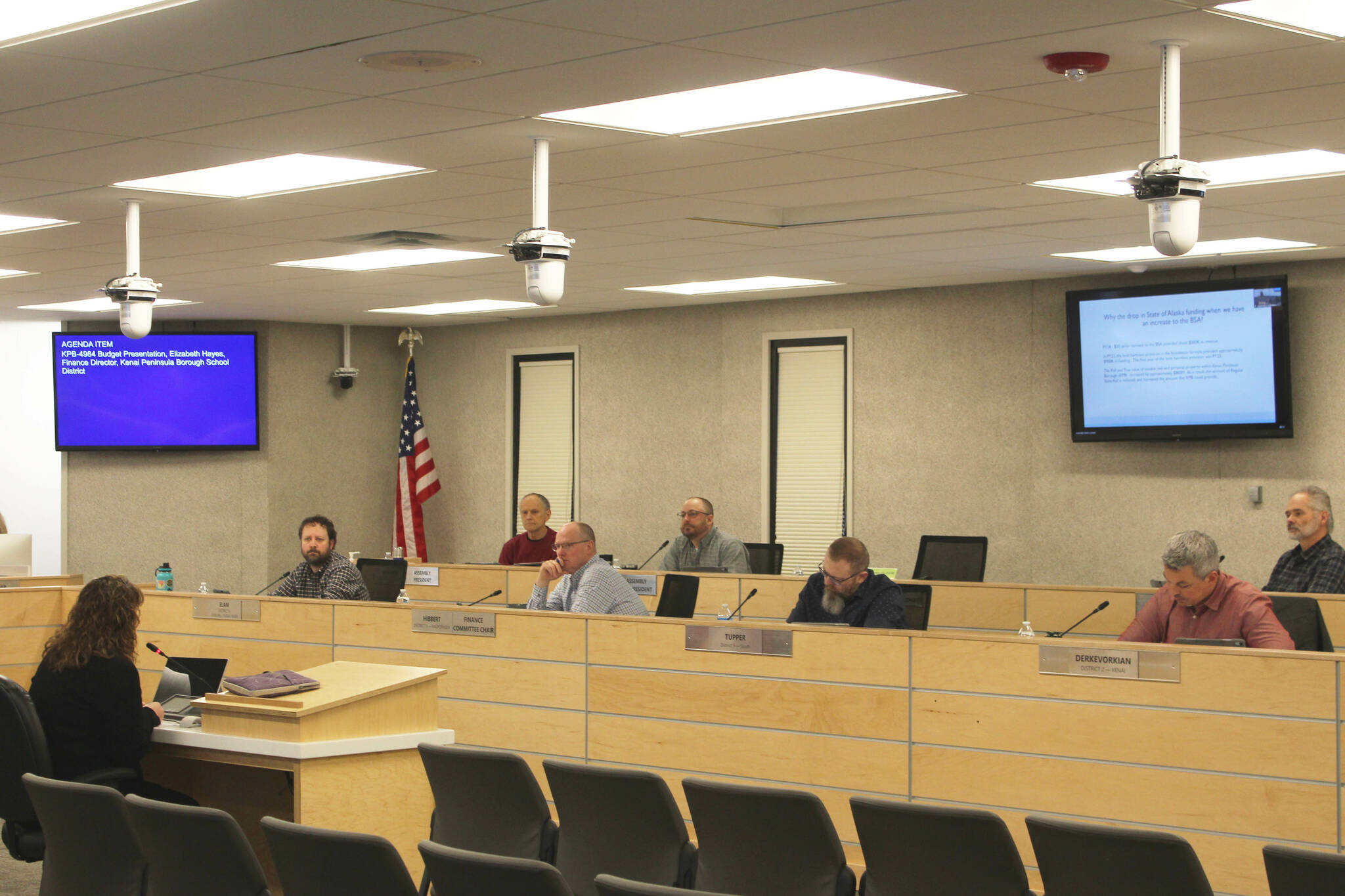Kenai Peninsula Borough taxpayers will pay less in property taxes for the upcoming fiscal year following a Tuesday vote by assembly members to decrease the borough’s mill rate. The assembly on Tuesday also approved the borough’s operating budget for the 12-month period that begins on July 1.
The document, which caps a monthslong process to plan the borough’s immediate financial future, also includes full funding for the Kenai Peninsula Borough School District, more than $11 million for borough solid waste services and new capital investments in borough schools and other infrastructure.
Across all revenue sources, the borough expects to take in about $175.7 million in the upcoming fiscal year, including about $98.4 million through the general fund. Most of the money flowing into the borough’s general fund, or about $43.4 million, comes from property taxes. Even more — $47 million — is expected to come from sales taxes.
The budget adds no new full-time staff positions, but describes an increase in personnel costs due to a new bargaining agreement with borough employees. The borough’s unemployment level was at 5.7% in February — the lowest rate in at least seven years and down from 17.2% at the height of the COVID-19 pandemic in April 2020.
The largest component of the borough’s budget is funding for education, which the borough will put about $64.7 million toward in fiscal year 2024. That’s an increase of about $3.76 million from the previous fiscal year and represents about 65% of all general fund expenditures.
KPBSD requested to be fully funded by the borough this year as it stared down a $13.1 million budget deficit. The borough assembly in May approved the maximum amount of funding allowable, at around $54.8 million.
During the same meeting on Tuesday, assembly members also approved a decrease to the borough’s mill rate, from 4.5 mills to 4.3 mills. That rate was most recently decreased last budget cycle, when former Borough Mayor Charlie Pierce also successfully proposed a rate decrease of two-tenths of a mill.
Mill rates are used to figure out how much someone will pay in property taxes during a certain fiscal year. To calculate how much property tax they expect to pay, an individual must divide the mill rate by 1,000 and then multiply that by their property’s taxable value.
“We’ve attempted to put ourselves into the shoes of the typical Kenai Peninsula Borough taxpayer while planning for an affordable borough well into the future,” Micciche and Kenai Peninsula Borough Finance Director Brandi Harbaugh wrote. “We believe that this budget strikes that balance.”
Micciche’s office in a press release distributed after the budget was passed celebrated the unanimous vote in support by assembly members.
“I want to thank members of the Kenai Peninsula Borough Assembly for supporting the proposed budget of my administration that works toward a budget that prioritizes the needs of the people of the Kenai Peninsula Borough, through quality services with a focus on affordability, sustainability, reducing waste and finding efficiency,” Micciche is quoted as saying in a press release.
The borough’s full budget document can be found at the borough’s website at kpb.us.
Reach reporter Ashlyn O’Hara at ashlyn.ohara@peninsulaclarion.com.

